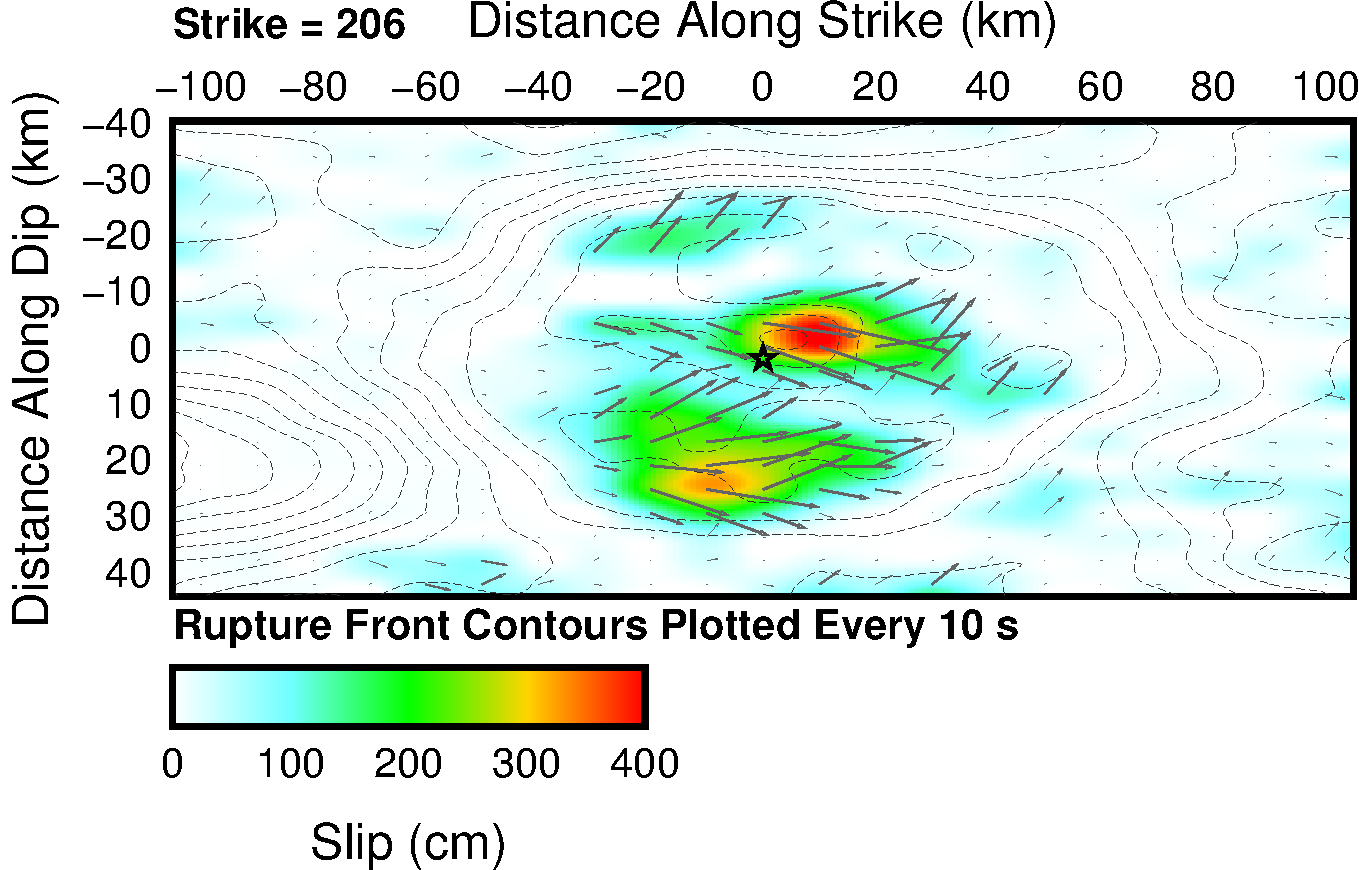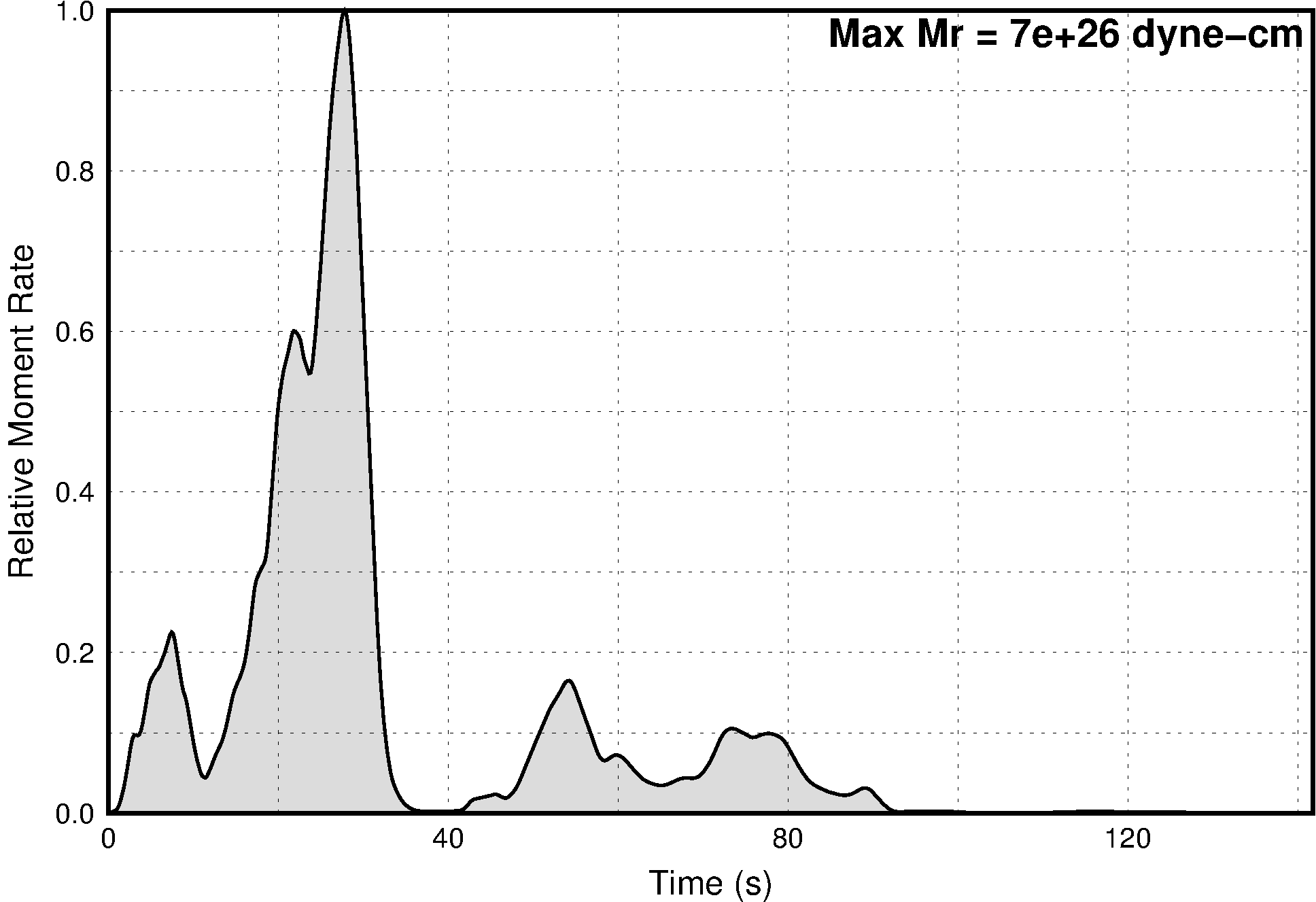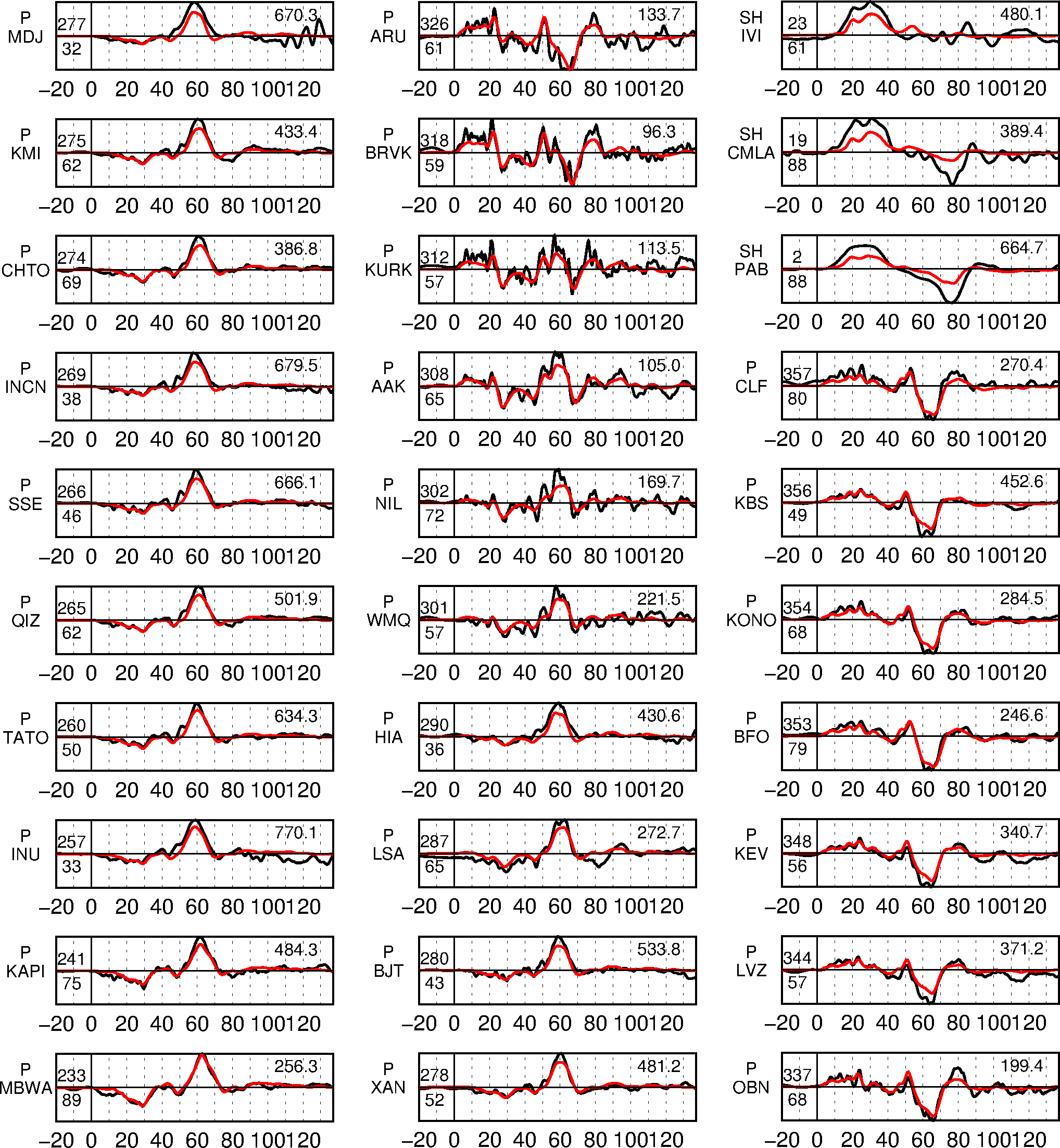We used GSN broadband waveforms downloaded from the NEIC waveform server.We analyzed 57 teleseismic broadband P waveforms and 24 broadband SH waveforms selected based upon data quality and azimuthal distribution. Waveforms are first converted to displacement by removing the instrument response and then used to constrain the slip history based on a finite fault inverse algorithm (Ji et al., 2002). We use the NEIC hypocenter (Lon.=178.8 deg.; Lat.=51.8 deg.). The fault planes are defined using the rapid W-Phase moment tensor solution of the NEIC.
After comparing the waveform fits based on two planes, we find that the nodal plane (strike=206.0 deg., dip=25.0 deg.) fits the data better. The seismic moment release based upon this plane is 1.01e+28 dyne.cm using a 1D crustal model interpolated from CRUST2.0 (Bassin et al., 2000).

Cross-section of slip distribution. The strike direction of the fault plane is indicated by the black arrow and the hypocenter location is denoted by the red star. The slip amplitude are showed in color and motion direction of the hanging wall relative to the footwall is indicated by black arrows. Contours show the rupture initiation time in seconds.

Source time function, describing the rate of moment release with time after earthquake origin.

Comparison of teleseismic body waves. The data are shown in black and the synthetic seismograms are plotted in red. Both data and synthetic seismograms are aligned on the P or SH arrivals. The number at the end of each trace is the peak amplitude of the observation in micro-meters. The number above the beginning of each trace is the source azimuth and below is the epicentral distance. Shading describes relative weighting of the waveforms.

Comparison of teleseismic body waves. The data are shown in black and the synthetic seismograms are plotted in red. Both data and synthetic seismograms are aligned on the P or SH arrivals. The number at the end of each trace is the peak amplitude of the observation in micro-meters. The number above the beginning of each trace is the source azimuth and below is the epicentral distance. Shading describes relative weighting of the waveforms.

Comparison of teleseismic body waves. The data are shown in black and the synthetic seismograms are plotted in red. Both data and synthetic seismograms are aligned on the P or SH arrivals. The number at the end of each trace is the peak amplitude of the observation in micro-meters. The number above the beginning of each trace is the source azimuth and below is the epicentral distance. Shading describes relative weighting of the waveforms.

Surface projection of the slip distribution superimposed on GEBCO bathymetry. White lines indicate major plate boundaries [Bird, 2003]. Gray circles, if present, are aftershock locations, sized by magnitude. The red edge of the fault model represents its upper limit. The earthquake hypocenter is denoted with a star.
| SUBFAULT FORMAT | CMTSOLUTION FORMAT | COULOMB INPUT FORMAT | GOOGLE KMZ FORMAT |
Ji, C., D.J. Wald, and D.V. Helmberger, Source description of the 1999 Hector Mine, California earthquake; Part I: Wavelet domain inversion theory and resolution analysis,
Bassin, C., Laske, G. and Masters, G., The Current Limits of Resolution for Surface Wave Tomography in North America, EOS Trans AGU, 81, F897, 2000.
This work is supported by the National Earthquake Information Center (NEIC) of United States Geological Survey. This web page is built and maintained by Dr. G. Hayes at the NEIC.